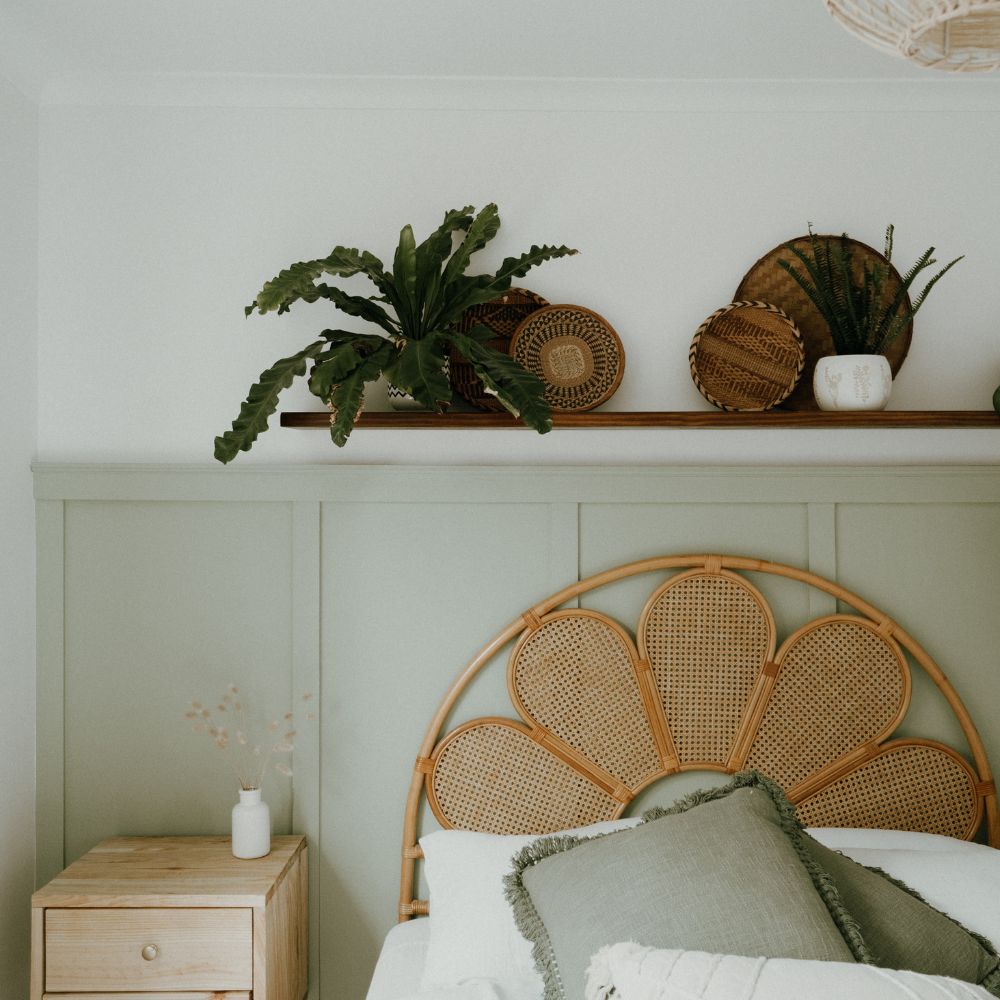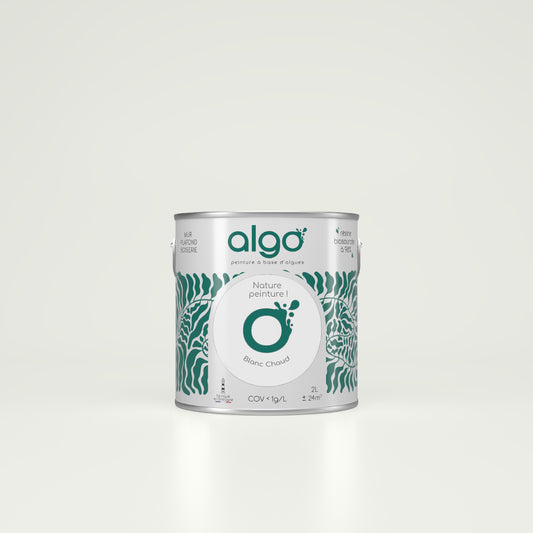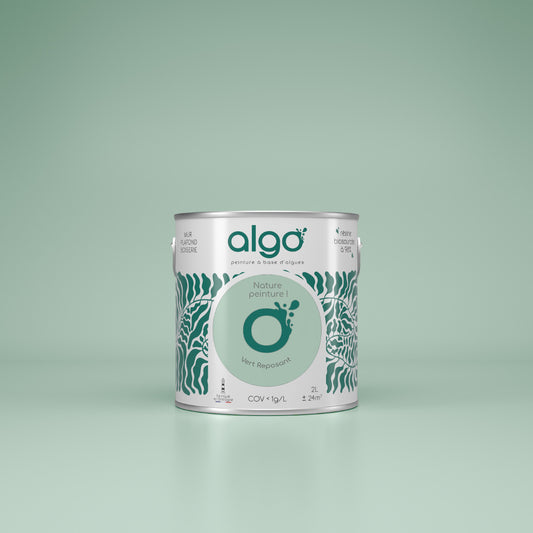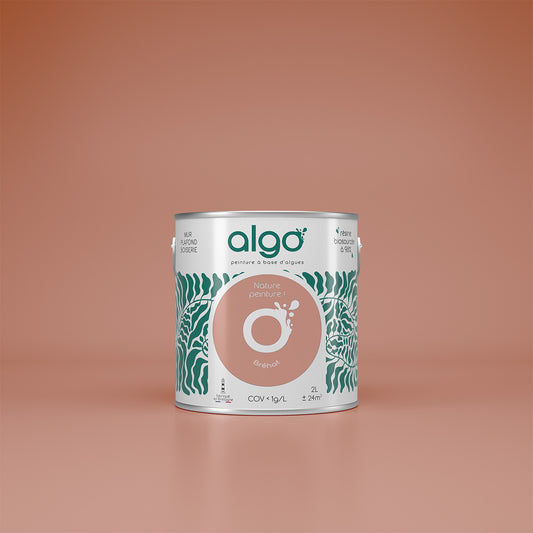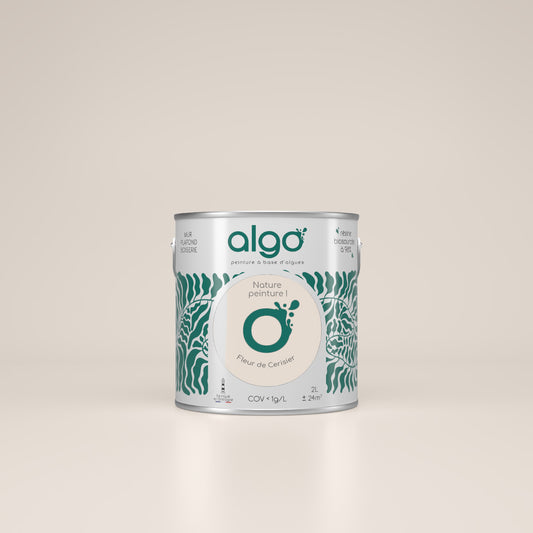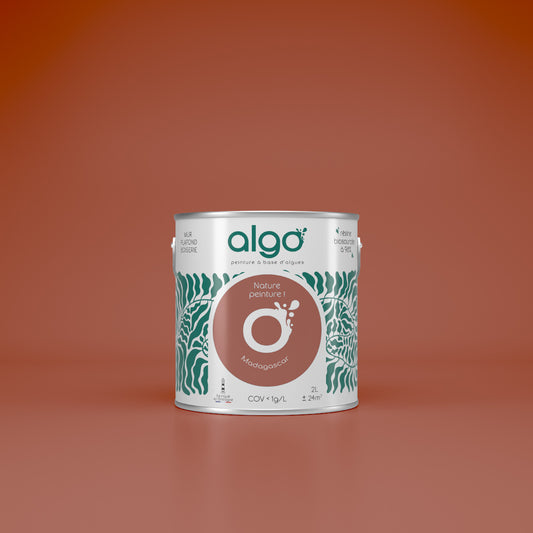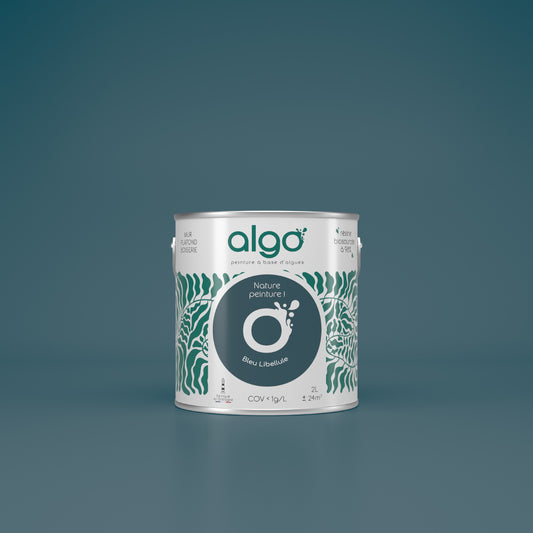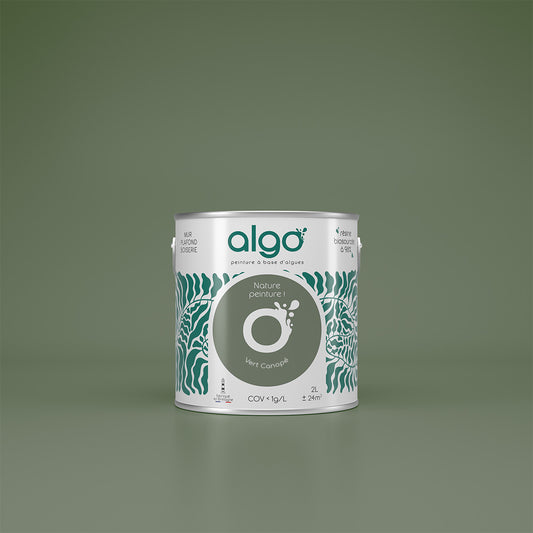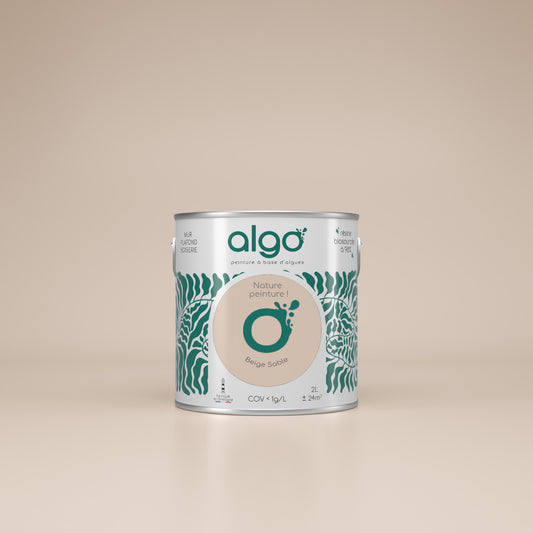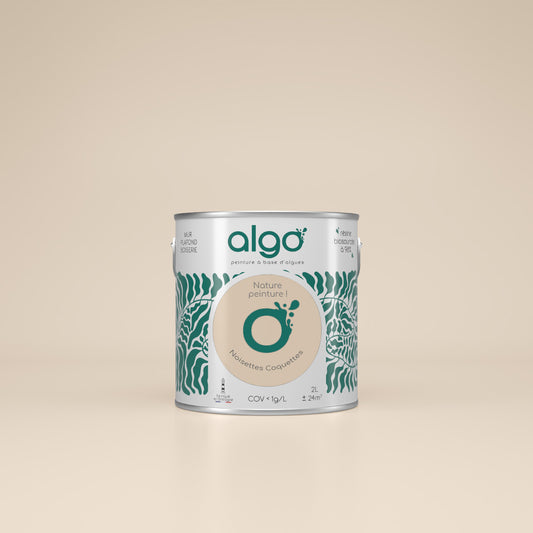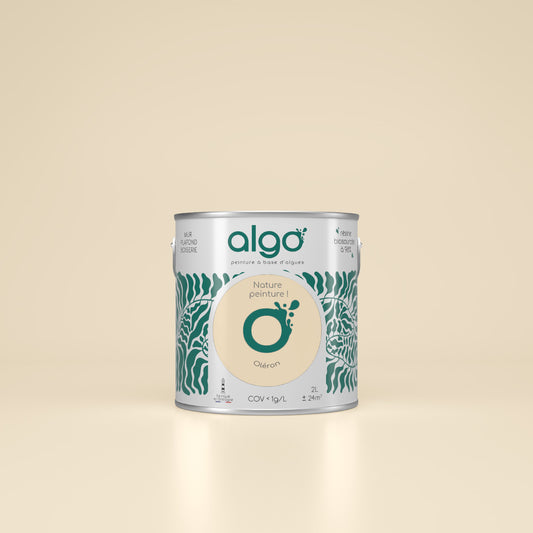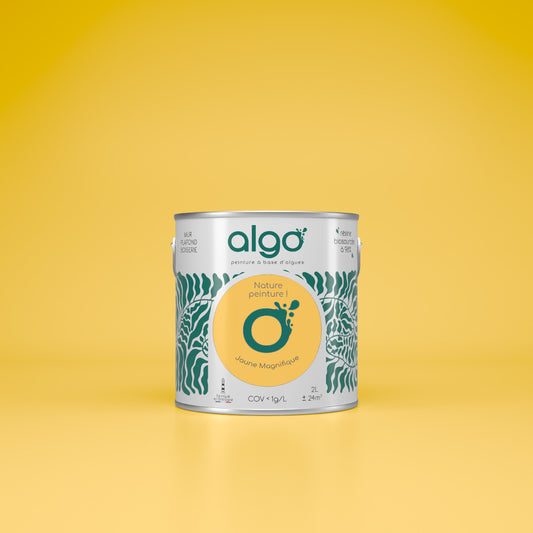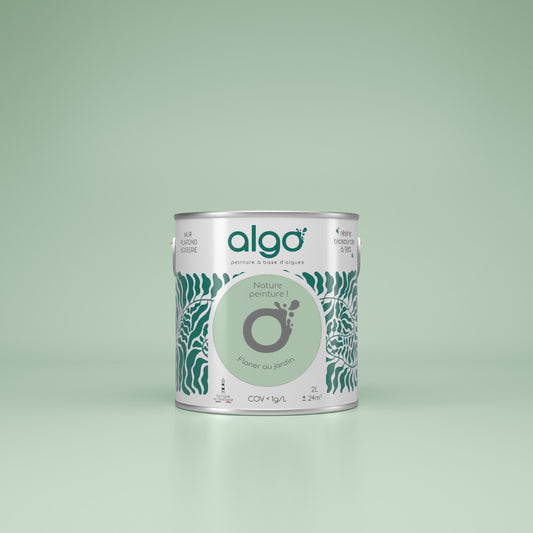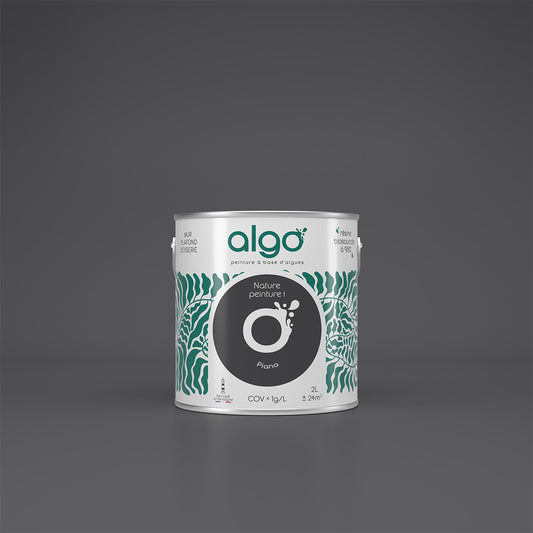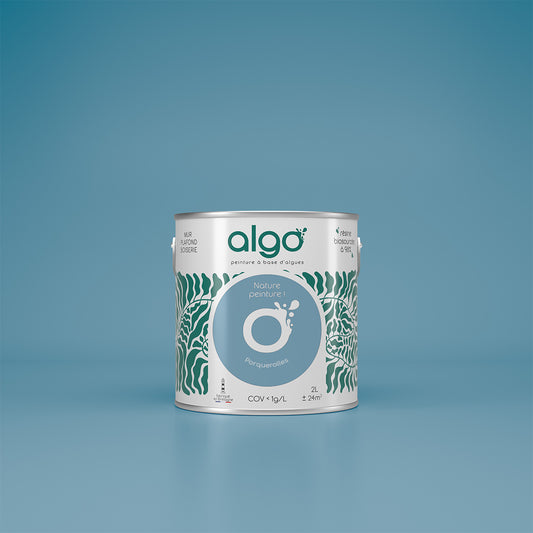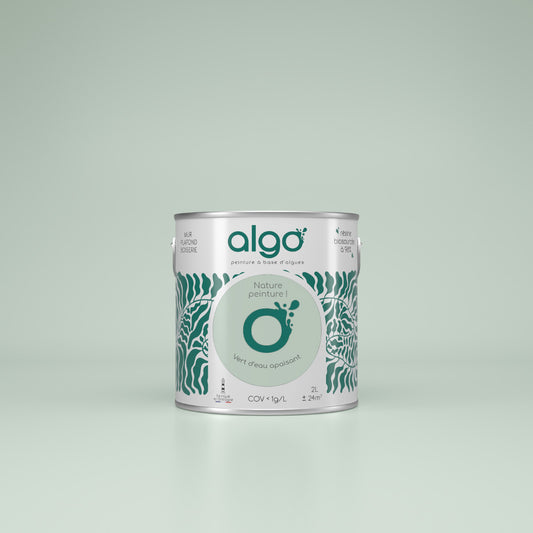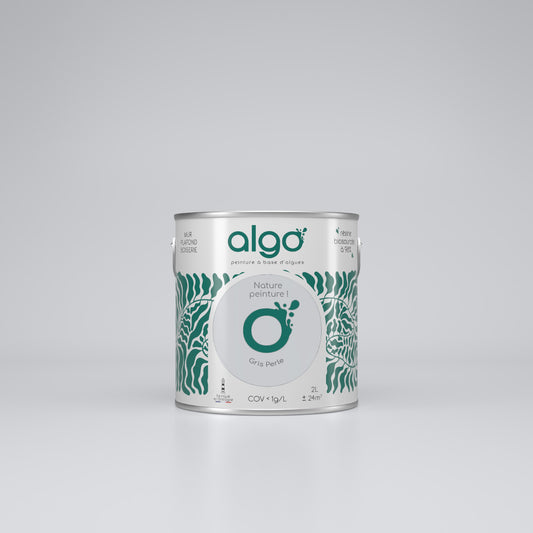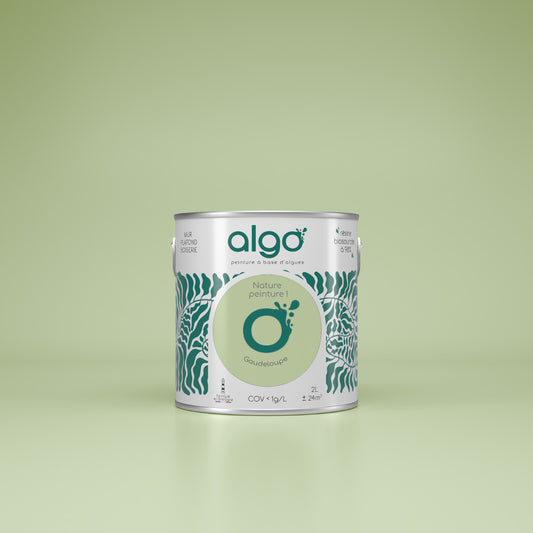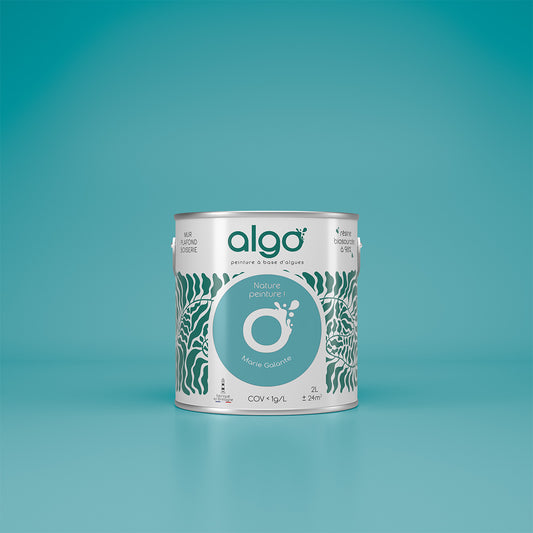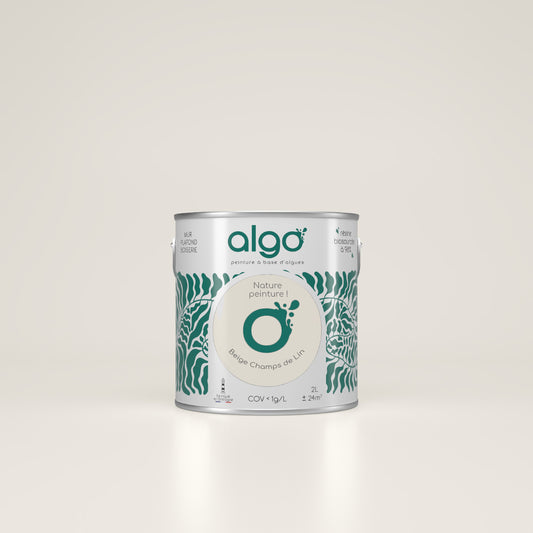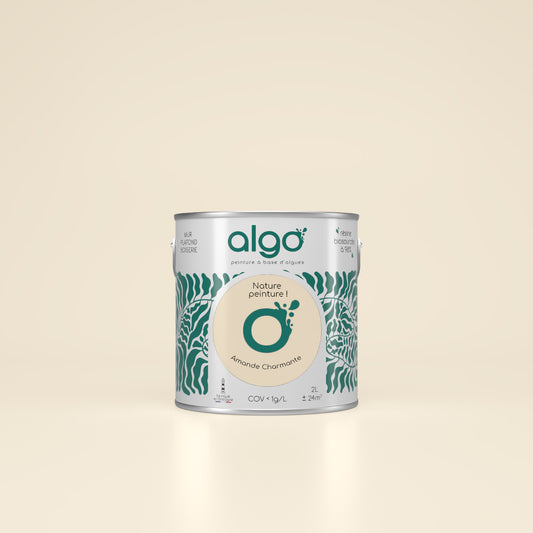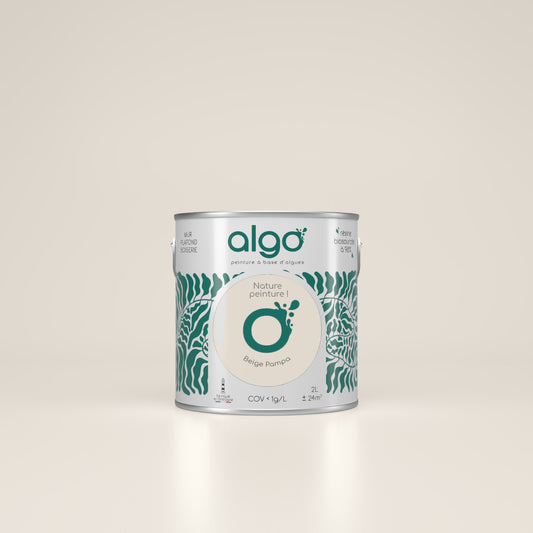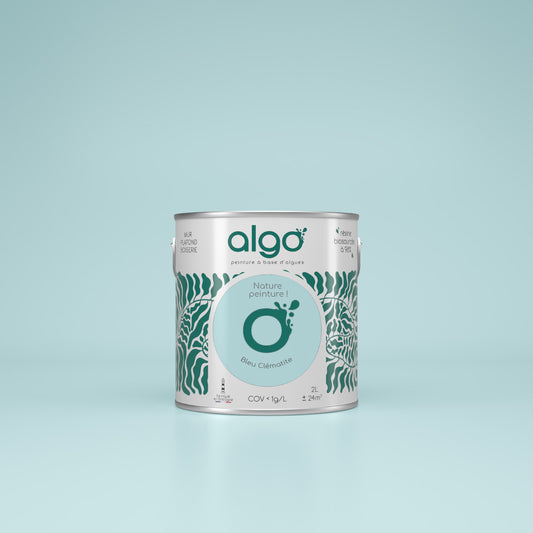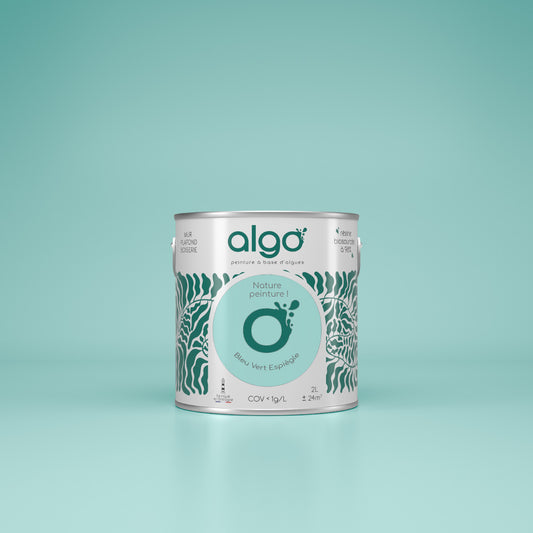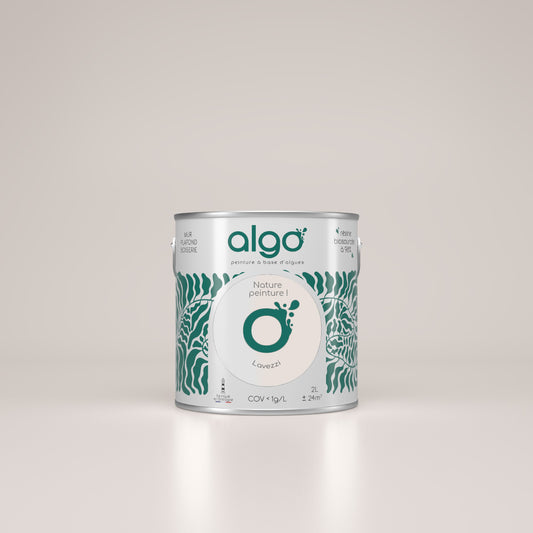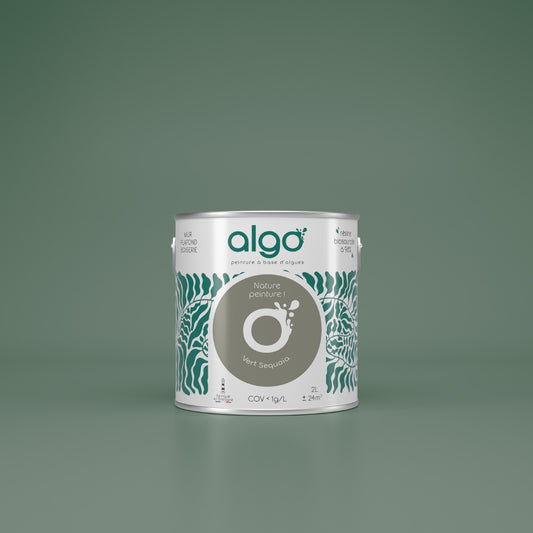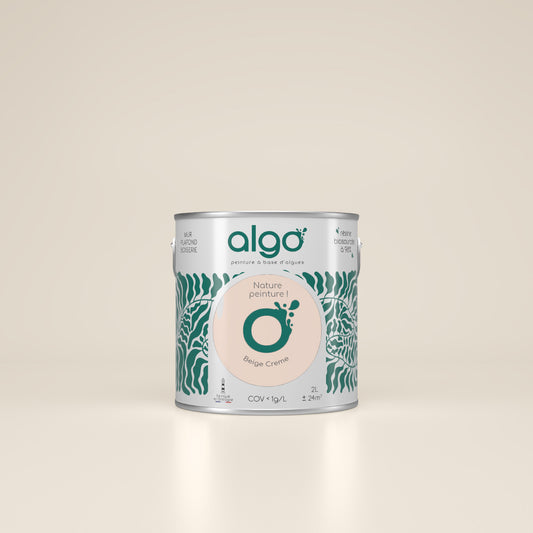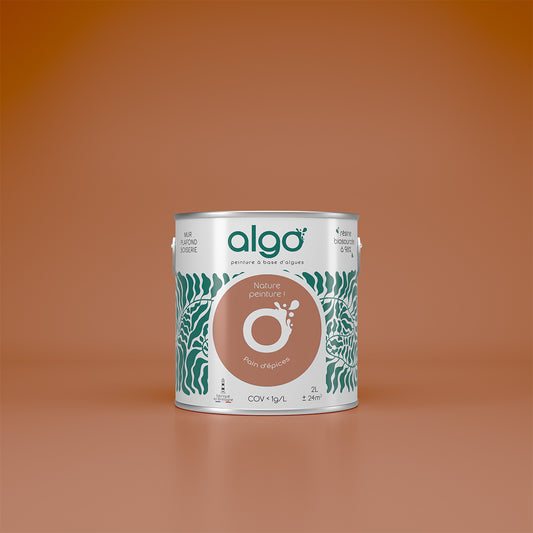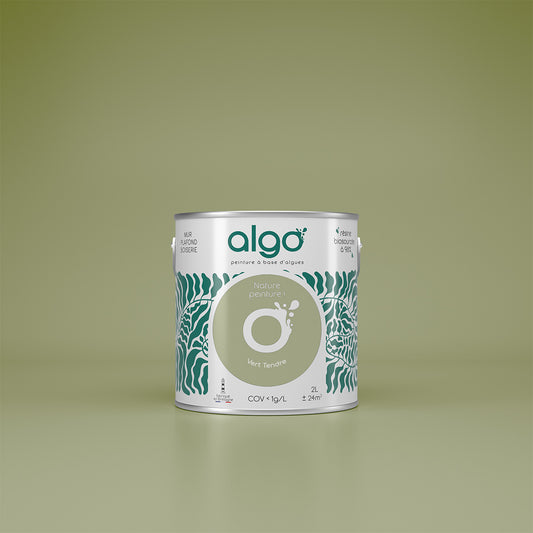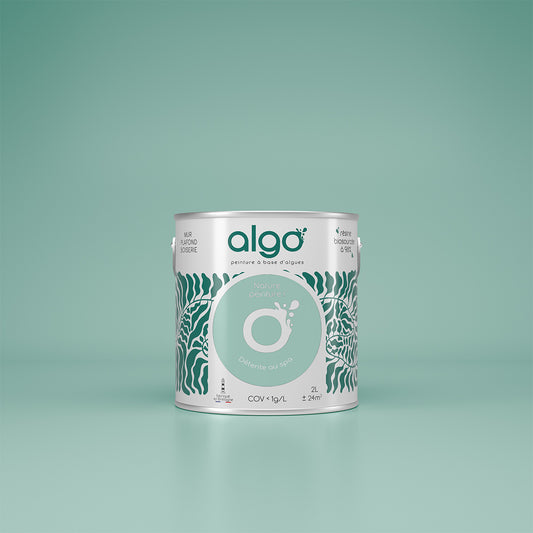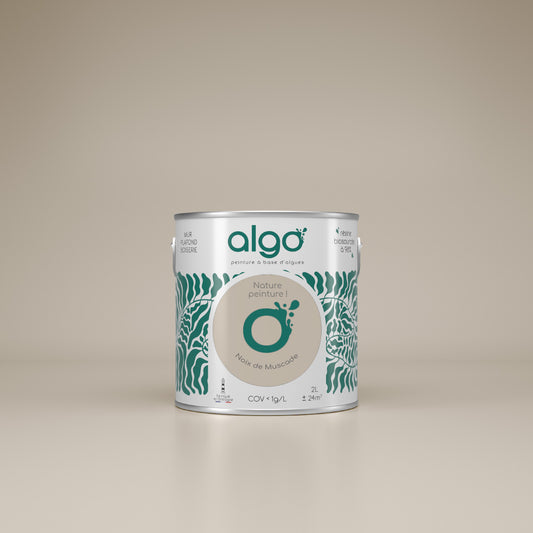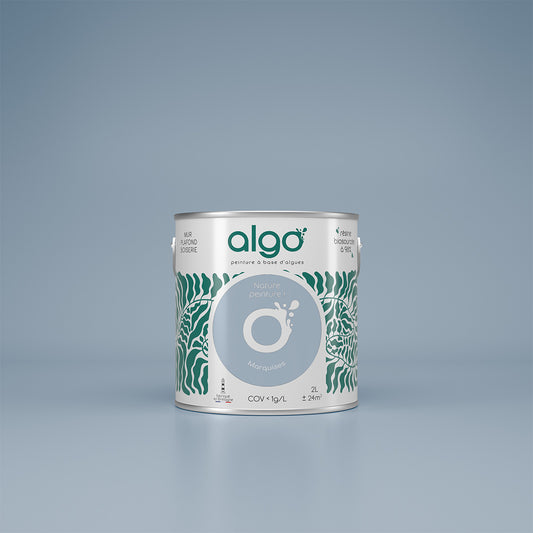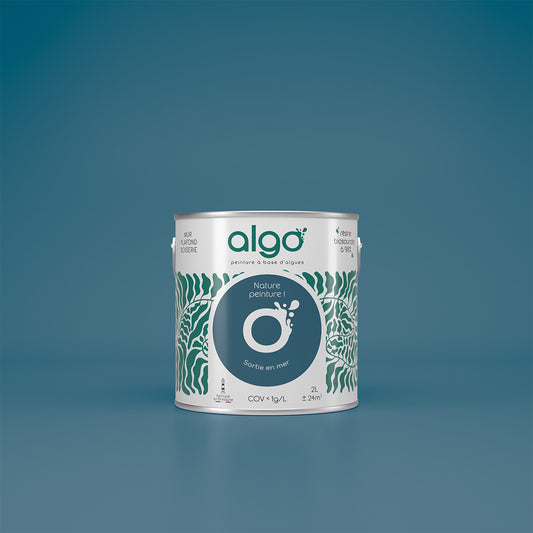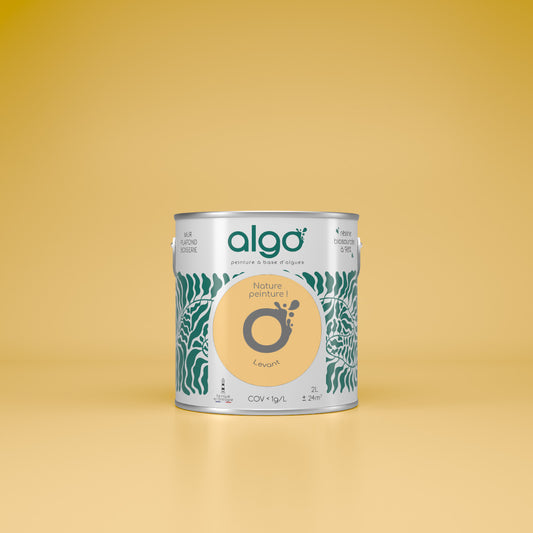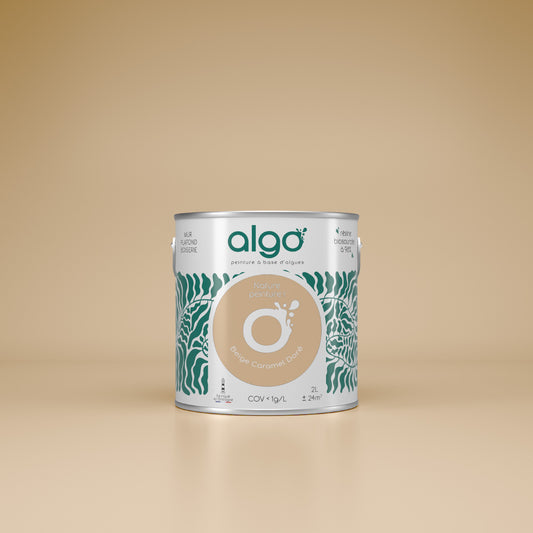-
Algo Eco-Friendly Paint - Warm White
Regular price from From 23,90 € ttcRegular priceUnit price 47,80 € ttc per l -
Algo Eco-Friendly Paint - Relaxing Green
Regular price from From 19,90 € ttcRegular priceUnit price 47,00 € ttc per l25,90 € ttcSale price From 19,90 € ttcSale -
Algo Eco-Friendly Paint - Bréhat Pink
Regular price from From 19,90 € ttcRegular priceUnit price 47,00 € ttc per l25,50 € ttcSale price From 19,90 € ttcSale -
Algo Eco-Friendly Paint - Cherry Blossom Beige
Regular price from From 19,90 € ttcRegular priceUnit price 47,00 € ttc per l25,50 € ttcSale price From 19,90 € ttcSale -
Algo Eco-Friendly Paint - Beluga White
Regular price from From 19,90 € ttcRegular priceUnit price 47,00 € ttc per l0,00 € ttcSale price From 19,90 € ttc -
Algo Eco-Friendly Paint - Terracotta Madagascar
Regular price from From 24,90 € ttcRegular priceUnit price 49,80 € ttc per l -
Algo Eco-Friendly Paint - Dragonfly Blue
Regular price from From 19,90 € ttcRegular priceUnit price 49,80 € ttc per l26,90 € ttcSale price From 19,90 € ttcSale -
Algo Eco-Friendly Paint - Canopy Green
Regular price from From 19,90 € ttcRegular priceUnit price 51,80 € ttc per l26,90 € ttcSale price From 19,90 € ttcSale -
Algo Eco-Friendly Paint - Sand Beige
Regular price from From 19,90 € ttcRegular priceUnit price 47,00 € ttc per l25,50 € ttcSale price From 19,90 € ttcSale -
Algo Eco-friendly Paint - Coquette Hazelnut Beige
Regular price from From 19,90 € ttcRegular priceUnit price 47,00 € ttc per l25,50 € ttcSale price From 19,90 € ttcSale -
Algo Eco-Friendly Paint - Oléron Beige
Regular price from From 23,50 € ttcRegular priceUnit price 47,00 € ttc per l -
Algo Eco-Friendly Paint - Magnificent Yellow
Regular price from From 23,50 € ttcRegular priceUnit price 47,00 € ttc per l23,50 € ttcSale price From 23,50 € ttc -
Algo Eco-Friendly Paint - Green Stroll in the Garden
Regular price from From 23,50 € ttcRegular priceUnit price 26,45 € ttc per l -
Algo ecological paint - Terracotta Ponziane
Regular price from From 19,90 € ttcRegular priceUnit price 49,80 € ttc per l26,90 € ttcSale price From 19,90 € ttcSale -
Algo Eco-Friendly Paint - Piana Black
Regular price from From 19,90 € ttcRegular priceUnit price 51,80 € ttc per l26,90 € ttcSale price From 19,90 € ttcSale -
Algo Eco-Friendly Paint - Porquerolles Blue
Regular price from From 19,90 € ttcRegular priceUnit price 49,00 € ttc per l25,50 € ttcSale price From 19,90 € ttcSale -
Algo Eco-Friendly Paint - Soothing Water Green
Regular price from From 23,50 € ttcRegular priceUnit price per -
Algo Eco-Friendly Paint - Pearl Grey
Regular price from From 19,90 € ttcRegular priceUnit price 49,00 € ttc per l25,50 € ttcSale price From 19,90 € ttcSale -
Algo Eco-Friendly Paint - Vert Guadeloupe
Regular price from From 23,50 € ttcRegular priceUnit price 47,00 € ttc per l -
Algo Eco-Friendly Paint - Marie-Galante Blue
Regular price from From 23,50 € ttcRegular priceUnit price 49,00 € ttc per l -
Algo Eco-Friendly Paint - Linen Field Beige
Regular price from From 23,50 € ttcRegular priceUnit price 47,00 € ttc per l -
Algo Eco-Friendly Paint - Charming Almond Beige
Regular price from From 23,50 € ttcRegular priceUnit price 47,00 € ttc per l -
Algo Eco-Friendly Paint - Pampa Beige
Regular price from From 23,50 € ttcRegular priceUnit price 47,00 € ttc per l -
Algo Eco-Friendly Paint - Clematis Blue
Regular price from From 23,50 € ttcRegular priceUnit price 49,00 € ttc per l -
Algo Eco-Friendly Paint - Playful Blue-Green
Regular price from From 23,50 € ttcRegular priceUnit price 47,00 € ttc per l -
Algo Eco-Friendly Paint - Meditation Session Blue
Regular price from From 23,50 € ttcRegular priceUnit price 47,00 € ttc per l -
Algo Eco-Friendly Paint - Lavezzi Beige
Regular price from From 23,50 € ttcRegular priceUnit price 26,45 € ttc per l -
Algo Eco-Friendly Paint - Sequoia Green
Regular price from From 19,90 € ttcRegular priceUnit price 51,80 € ttc per l26,90 € ttcSale price From 19,90 € ttcSale -
Algo Eco-Friendly Paint - Arctic Polar Bear
Regular price from From 23,50 € ttcRegular priceUnit price 47,00 € ttc per l -
Algo Eco-Friendly Paint - Cream Beige
Regular price from From 23,50 € ttcRegular priceUnit price 47,00 € ttc per l -
Algo Eco-Friendly Paint - Exquisite Mirabelle Yellow
Regular price from From 19,90 € ttcRegular priceUnit price 49,00 € ttc per l25,50 € ttcSale price From 19,90 € ttcSale -
Algo Eco-Friendly Paint - Gingerbread Brown
Regular price from From 24,90 € ttcRegular priceUnit price 49,80 € ttc per l -
Algo Eco-Friendly Paint - Soft Green
Regular price from From 23,50 € ttcRegular priceUnit price 47,00 € ttc per l -
Algo Eco-Friendly Paint - Green Spa Relaxation
Regular price from From 23,50 € ttcRegular priceUnit price 47,00 € ttc per l -
Algo Eco-Friendly Paint - Brown Sunday Night Pancakes
Regular price from From 23,50 € ttcRegular priceUnit price 47,00 € ttc per l -
Algo Eco-Friendly Paint - Nutmeg Beige
Regular price from From 23,50 € ttcRegular priceUnit price 47,00 € ttc per l -
Algo Eco-Friendly Paint - Marquises Blue
Regular price from From 23,50 € ttcRegular priceUnit price 47,00 € ttc per l -
Algo Eco-Friendly Paint - Sea Trip Blue
Regular price from From 24,90 € ttcRegular priceUnit price 49,80 € ttc per l -
Algo Eco-Friendly Paint - Levant Yellow
Regular price from From 23,50 € ttcRegular priceUnit price 49,00 € ttc per l -
Algo Eco-Friendly Paint - Golden Caramel Beige
Regular price from From 19,90 € ttcRegular priceUnit price 47,00 € ttc per l24,90 € ttcSale price From 19,90 € ttcSale
Choose your colors with ease
-

Find the perfect shades with our color consultant
Book your free coaching -
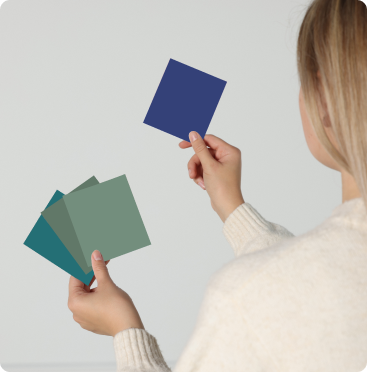
Easily choose your shades with our samples
See our 100 samples -
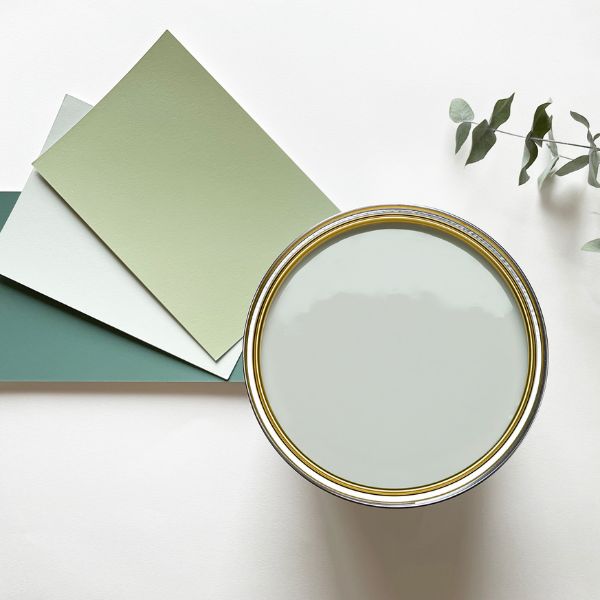
Fall for our magnificent color harmonies
See our color harmonies
-

Fast delivery
and neat -

A service
top customer! -

More than 2000
verified reviews -

Payment
secure
Painting your hallway may lead you to ask yourself a few questions, and they will always be legitimate!
With our clients' experience, we will try to answer your most frequently asked questions when it comes to painting a hallway.
From considering the choice of color, the essential technical criteria regarding the paint to choose and some practical tips for application, we are here to help you carry out your painting work!
The hallway: a room to consider
The hallway is certainly not the room in the house where we spend the most time in a home.
On the other hand, one thing is certain: it is a passageway inevitably used several times during your day. Taking this aspect into account is necessary in order to choose a paint that can withstand the natural wear and tear of daily life due to numerous passages.
Wear and tear will therefore be constant, if the paint is not suitable for use in a corridor this risks deteriorating the aesthetics of your corridor: marks, scratches and stains will be visible.
Paints that are not suitable for high traffic areas or are of poor quality may not last long.
Think about it, but it's important to choose a paint that can resist scratches and bumps.
Narrow and poorly lit, corridors undeniably impose constraints on decoration, but also on the understanding of space since they are not always sufficiently bright.
The choice of the shade you are going to apply will therefore be essential, especially if your corridor is poorly lit by natural light.
So don't neglect painting in the hallway, you can thus ensure aesthetic continuity for your entire interior.
Which paint should you choose to repaint your hallway?
To paint your hallway, as with all the other rooms in your house, we will of course recommend a natural and ecological paint.
While the benefits for indoor air quality and health preservation are certain, natural paints today meet all the requirements of a conventional paint on the market and are therefore made from solvent-based raw materials.
A word of advice: don't get confused, since even water-based paints are solvent-based. The alternative is therefore clear: Algo paints are bio-sourced and certified with the European Ecolabel, accrediting our approach.
Our paints will thus combine all the necessary criteria for a corridor: the durability of our paints, through the use of algae in our composition, will provide additional protection against shocks, stains and possible scratches.
The washability of our paints is also an important criterion: and our paints are washable in all the finishes we offer, especially in satin finish.
A washable paint with a satin finish allows you to clean your walls in the long term without damaging the paint film.
The very low odor and optimized 30-minute touch drying will also be advantages to consider when choosing and applying your hallway paint.
What color should you use in your hallway?
The choice of colors to apply in a hallway is decisive for the atmosphere and decoration that you want to give to your hallway, which is why we offer you these few tips.
Colors will play a role in optimizing your space, particularly by making it more spacious.
For this reason, we suggest our clients use neutral and light colors or, failing that, pastel shades to create a less imposing decor.
All shades of white and cream tones like beige are the colors to favor as a priority when painting a corridor to avoid it being too dark.
Generally narrow, these spaces need increased brightness and adding a white tint will give a feeling of space and brightness.
Using warm white is a sure bet to visually enlarge the hallway of your apartment.
These basic shades will bring a balance and versatility that will not be met by any other shade: especially as part of a clean and modern look.
In another register, shades like soft grays, or pastel blues will open up the space, even if the sensation of brightness will be less than for a white or beige paint.
However, it is a good alternative for decorating the room since these are dull colors that will not be too imposing and darken the hallway.
To combine colors and create a trendy hallway, there's nothing stopping you from painting the wooden door(s) in a different color from the walls (pink, terracotta, or even blue). Originality is guaranteed when it comes to matching the tones!
How to paint your hallway?
Preparation of walls and supports
As with all rooms in the house, the steps for painting the hallway do not vary.
Preparing the surface, by removing dust and dirt with a cloth slightly dampened with soapy water, will help remove most of the stains and residue on the wall.
Then, lightly sand the surface using sandpaper to smooth the paint and erase some imperfections and to be able to better identify other defects.
Filling holes and potential cracks can be done using filler.
Make sure you have the necessary tools to paint the corridor, namely a paint tray, a roller, and a frame, and a sash brush to clear the corners.
Don't hesitate to protect the furniture and sockets in the room before painting.
Applying the paint
It will be more useful to start with the ceiling to avoid dripping from the walls.
For even coverage on both walls and ceilings, paint in small areas and don't hesitate to go over the area again without reloading the roller to spread any excess paint evenly over the entire surface.
It is important not to overload the roller too much to avoid dripping, blistering or possible drying defects.
For edges and corners, using a sash brush will be very useful.
Using an undercoat will be essential before using two top coats, preferably satin or velvet for the walls of your hallway.
The drying time between each coat is 12 hours, to ensure sufficient thorough drying.
